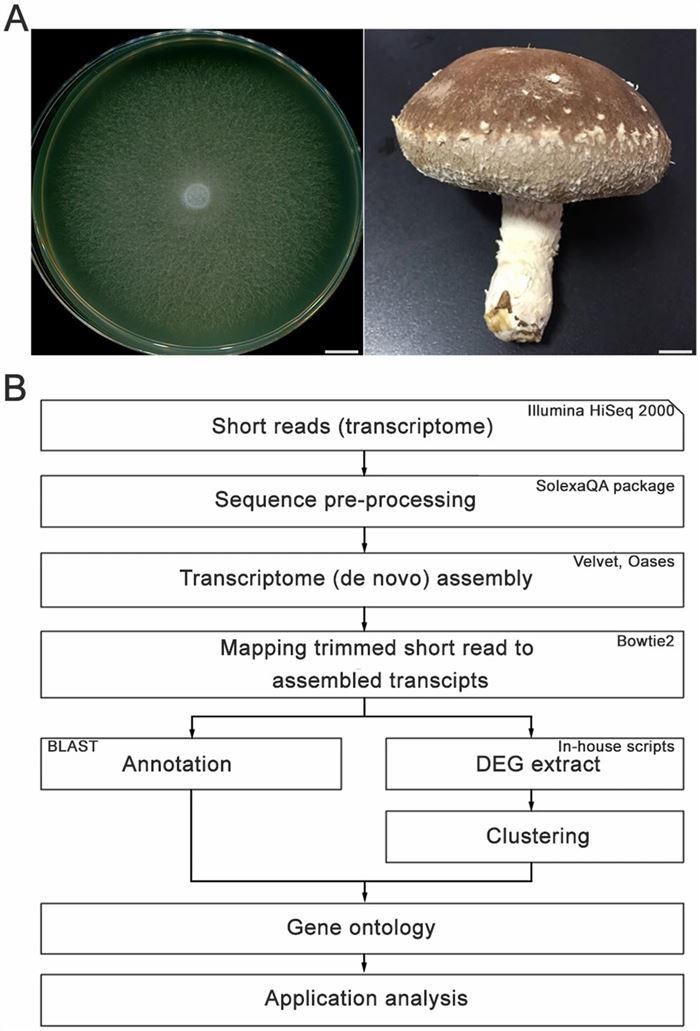Based on advanced RNA-sequencing (RNA-Seq) technology and bioinformatics infrastructure, Lifeasible offers mushroom differential transcriptomics services in different growth and development periods to help you identify genes differentially expressed at different times.
Introduction to Mushroom Transcriptomics in Different Developmental Stages
In the fungal kingdom, complex multicellularity is discussed primarily in the context of substrates. There are more than 21,000 species of mushroom-forming fungi. The substrates of mushroom-forming fungi are important in agriculture, ecology, and medicine; they are an important and sustainable food source with good medicinal properties. However, little research has been done on the development of substrates of mushroom-forming fungi, resulting in a lack of information on the genetic basis of the complex multicellular origin of this group. Transcriptome analysis could better understand gene expression changes in mushrooms at different developmental stages. Moreover, various processes have been elucidated by transcriptomics. The formation of mushroom substrates is regulated at the transcriptional level and leads to morphological changes and expression of specific stages during development, resulting in beneficial properties.
 Fig. 1. Schematic of the comparative transcriptome analysis in Lentinula edodes. (Song H Y, et al., 2018)
Fig. 1. Schematic of the comparative transcriptome analysis in Lentinula edodes. (Song H Y, et al., 2018)
Services
To analyze the physiological changes and material accumulation processes of mushrooms during growth at the transcriptome level, Lifeasible performs transcriptional sequencing of mushrooms at different growth and developmental periods, identifies genes differentially expressed at different periods, and performs functional annotation to analyze their expression patterns during different growth periods.
We have optimized appropriate operating procedures from mycelial growth to substrate maturation under controlled plant conditions of light, temperature, humidity, and carbon dioxide (CO2) concentration. We have an advanced high-throughput RNA-seq technology platform for transcriptome analysis of a wide range of mushrooms, including A. tiantuanus, A. polymorpha, A. chrysanthemum, and Ganoderma lucidum, etc.
We focus on transcriptome analysis at three developmental stages, including mycelium (GS), protoplast (PS), and meristem (MF) stages. We can sequence the transcriptomes of mushrooms at four different developmental stages (progenitor, juvenile, harvesting and open) to screen for highly expressed specific genes. The following information can be obtained:
- Showing gene expression changes in mushrooms at different developmental stages.
- Analysis of key pathways and pivotal genes during mushroom development, as well as gene profiles associated with their sexual development.
- Lay the groundwork for selecting the most appropriate life cycle/developmental stages to achieve better and increased production of desired compounds.
- RNA-Seq coupled with systems biology tools enables the systematic identification of reporter metabolites and metabolic regulatory hotspots representing essential regions of the metabolic network.
Our service provides transcriptomic data of different mushrooms at different growth and developmental stages, screens for genes that are significantly up- and down-regulated at different stages. It provides genetic data for further study of their own growth and developmental mechanisms. In addition, our experts provide insight into the role of individual key genes during substrate development by cloning them. If you are interested in our services, please contact us.
Reference
- Song H Y, et al. (2018) Comparative transcriptome analysis of dikaryotic mycelia and mature fruiting bodies in the edible mushroom Lentinula edodes[J]. Scientific reports. 8(1): 1-15.
For research or industrial raw materials, not for personal medical use!


 Fig. 1. Schematic of the comparative transcriptome analysis in Lentinula edodes. (Song H Y, et al., 2018)
Fig. 1. Schematic of the comparative transcriptome analysis in Lentinula edodes. (Song H Y, et al., 2018)